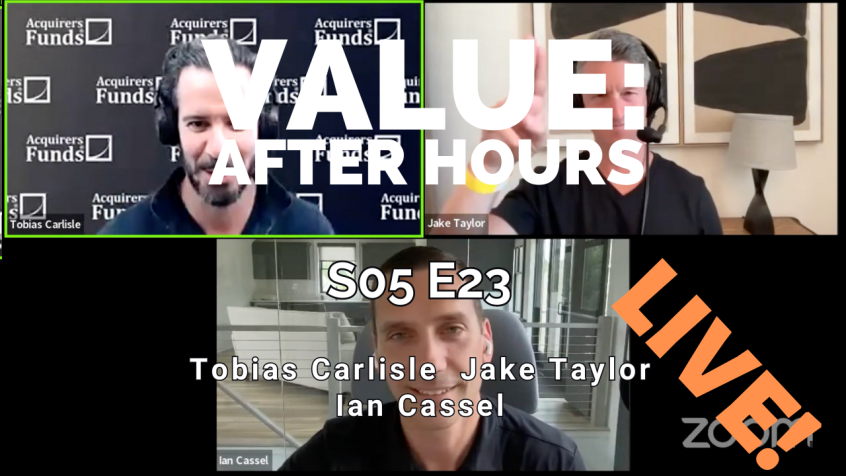During their latest episode of the VALUE: After Hours Podcast, Cassel, Taylor, and Carlisle discuss The Lightning-In-A-Bottle Portfolio. Here’s an excerpt from the episode:
Ian: Yeah. So, that’s the overall general theme of how I think about things. And so, from that perspective, always looking three, usually three years, but let’s say five years out, where do I think this business will be on the revenue side, even profitability side, operating margin side? Do I think it can continue to grow, let’s say 30% a year, the next three years? If I don’t think they’re going to dilute me, they have a clear runway to get there. That’s generally what I think their overall return should be for that equity. I’m actually writing about this. It’s probably a blog post this week. I’m titling it, Lightning in a bottle. Some of the best performing micro caps have, I would say, three core elements.
Number one, they were small. And so, small could be sub-hundred million, let’s just call it that. And generally, it’s that way because you have the full pathway of discovery yet to occur in that equity. If you’re sub-hundred million, you’re going to get some maybe institutional ownership, but you’re mainly retail owned, so you have yet to experience the institutional discovery of that equity, which pushes it up as the volume increases. Bigger, bigger pools of capital find it. The next thing is, either a high organic growth rate or a high operating leveraged business. Either one or two or both of those things combined are crucial. And number three, a small outstanding share count. When you combine all those three, you have, what I call, Lightning in a bottle. I came up with that lightning in a bottle phrase from actually, I forget who it was. It was this guy, Pieter Musschenbroek. He’s from the Netherlands. He’s the one that developed the Leyden jar, and that’s the jar that actually Benjamin Franklin used to capture the lightning in 19– [crosstalk]
Tobias: Literally, lightning a bottle.
Ian: Yeah, like, a lightning in a bottle. Basically, that was the predecessor to the current capacitor was this Leyden jar. And so, that’s where I started down this pathway of lightning in a bottle. That’s what these stocks are. The companies that make the biggest sustained moves upwards, because you find micro caps that can go from 1 to 5 or 1 to 10 and go back to 1. You can find them and you can do well trying to play those. But the ones that actually sustain the momentum are ones that produce earnings per share really, really quickly. They go from $0 to a $1 to $2 in earnings per share really quick, and it takes everybody off guard. Because there’s a scarcity of shares, there’s illiquidity. Again, one of those three things was a small outstanding share count. [crosstalk]
Jake: Would the implication for that at a portfolio then be like, if it’s not working within a year or six months, turn it over and you got to get to the next one. Then the ones that do work, you hold them. You have a more active farm system basically is one way to think about it.
Ian: Yeah. I posted some ideas on this to the micro cap club on our forum, and we had some discussions going back, mainly on, I think everybody would agree on the start small, high organic growth rate or operating leverage. What I mean with operating leverage is, you can obviously find companies that can grow revenues 5%, but they have such high fixed cost where every incremental dollar basically falls to the bottom line. So, you can have things growing 5% that can grow the bottom line 100%. There’s also going to be lightning-in-a-bottle situations, because that really impacts the EPS line.
You can find out more about the VALUE: After Hours Podcast here – VALUE: After Hours Podcast. You can also listen to the podcast on your favorite podcast platforms here:
For all the latest news and podcasts, join our free newsletter here.
Don’t forget to check out our FREE Large Cap 1000 – Stock Screener, here at The Acquirer’s Multiple:



